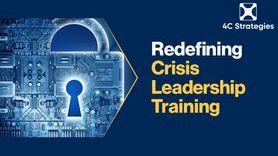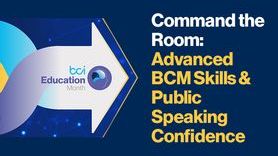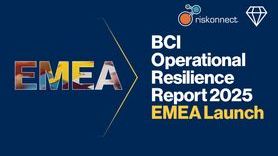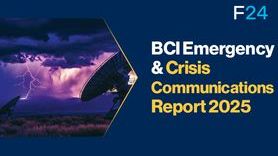Proactive preparedness as a long-term commitment: A case study of a UK airport
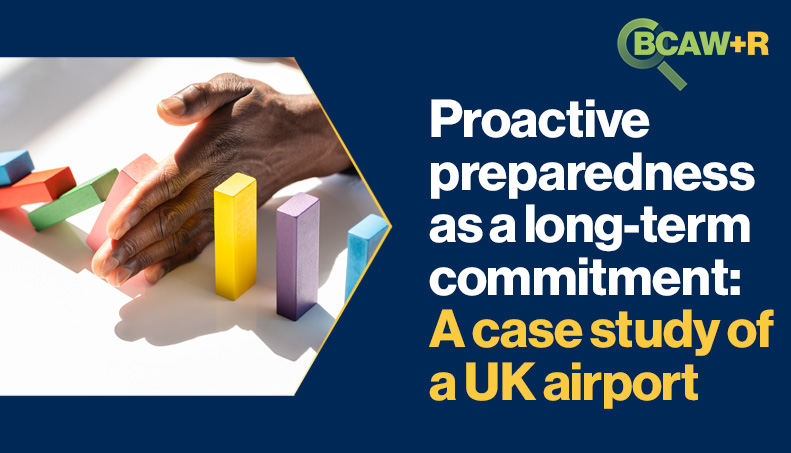
Executive summary
In pursuit of ‘proactive preparedness’, organizations often make the mistake of prioritising individual training sessions or exercises as a way to demonstrate capability before needs arise. However, meaningful preparation involves long-term, thoughtful engagement in capability strengthening initiatives. This case study illustrates this through the example of a UK airport’s approach to strengthening capability in its Crisis Communications Team. This long-term engagement strategy has already been proven to be valuable in a number of areas, which has resulted in the Crisis Communications Team performing well during a recent live incident, with a response that has since been recognised as ‘Best in Class’ in its industry.
Introduction
The ability to be ‘proactive’ is a strength in any organization. It can be gauged by the ability to pre-empt issues and achieve objectives before needs arise. However, a vital part of crisis preparedness is to have a realistic understanding of an organization’s actual capability.
Misalignments between perceived and actual capabilities will likely hinder organizations, particularly when efforts to be ‘pro-active’ have few sustainable or meaningful impacts. This may occur when ‘proactivity’ is not a lasting initiative and done on an ad hoc basis – such as when exercises are conducted without appropriate objectives, post-exercise performance evaluation and follow-up, or when guidelines and policies are promoted but rarely reviewed.
This case study identifies some of the links between a long-term commitment to proactive preparedness and improvements in performance. It employs the example of a UK airport who, over a period of four years, improved the capability of its crisis communications function significantly by using a phased and integrated approach to strengthening its people, plans, and processes. This included developing a capability framework (maturity model), gap analysis, regular benchmarking of capability, reviewing and producing plans and policies, training teams, conducting tests and exercises, and continually reviewing these processes. The result of this consistent and targeted investment in crisis preparedness was evident through a strong response to a recent live incident.
Challenges
Best practice dictates that organizations perform best when they are prepared to take active steps to continuously improve teams through new initiatives based on learning and experience. The challenge facing the Crisis Communications Team in this case study was how to sustain interest during long-term programmes, and how to ensure each initiative adds tangible value.
To overcome this challenge, the programme of work at the airport for the communications team was designed specifically based on a long-term strategy for implementation. For example, a capability maturity model was produced and used to benchmark progress over time and to establish best practice for their organization. This was a significant factor in ensuring the work continued to be relevant, and positive feedback was encouraged as teams grew their skillsets.
Actions taken
Over the course of many years, the Crisis Communications Team took the following steps:
Document review
The programme was launched with a comprehensive document review of the existing processes used to respond to crises from a communications perspective. The purpose of this phase was to reveal key strengths, as well as missing requirements and specific areas for improvement. Upon reaching a new consensus on what ‘good looks like’ in the organizational context, these gaps were mapped into a programme plan.
One of the identified areas for improvement emerging from this phase was the need to understand the operational responsibilities attached to each role within the Communications Team. In particular, it was discovered that practitioners questioned the exact steps they should expect to take during an incident, and how this differs from colleagues.
The creation of a Capability Maturity Model
A Capability Maturity Model is a valuable tool for benchmarking, tracking and informing improvements over time. The model was designed to define current and desired levels of maturity. Each of these levels was supported by instructions on how to match maturity to the most optimal means of training, exercising, or consolidating knowledge.
Over time, this model ensured that resources could be directed to where they were most needed. It also enabled leadership to show a clear return on investment when costs could be attributed to plans for getting from the assessed level of maturity, to the planned level of maturity.
New documentation
Equipped with a new understanding of knowledge gaps, the team workshopped a suite of new documents for each component of the approach. Each document was intended to benefit each of the different roles in the organization, and are used in the ongoing evaluation of capabilities, as well as acting as a ‘handrail’ in a crisis. Each answered a different high-level question:

Training
The Crisis Communications Team took part in training sessions to familiarise themselves with the importance of effective crisis communications, the specific arrangements in place at the airport, and how to respond effectively. To get to this point, a training needs analysis was conducted, enabling the team to build a framework for the Crisis Communications Training which included long-term objectives.
To ensure sustainable and proactive preparation, the airport took steps to protect against future training needs gaps. An onboarding training pack was developed which reflected these key areas and could bring new staff members up to a level of capability consistent with the rest of the team.
Exercising
The knowledge from the training programme and the new supporting documents were put to the test in a number of tabletop and simulation exercises conducted in the months after each training session.
These exercises and scenarios were designed to allow the audience to consider the strategic reality of the situation, evaluate the risks and implications for the whole organization, and develop options and plans for the communication response. Post-exercise feedback was provided, and as a result, the Crisis Communications Team were better equipped with tools to use their own plans in any future incident.
Results
This programme of capability building events and activities has been running for over four years, and the impact and results are clear. Last year, the airport’s crisis communication abilities were tested in a live incident which received positive national press coverage.
A number of positives were identified from the response that were enabled through all the preparations:
- The sharing of roles and division of work proved to be efficient in a high-pressure situation. It was encouraging to see that an area of weakness identified pre-emptively at the outset of the programme of work had emerged as a strength during a live response.
- The Crisis Communications Team were confident in their abilities and could convey the priorities of the airport to the general public in a high-pressure situation. This was enabled by experience with social media training and relevant table-top exercises which presented a number of ‘worst-case’ scenarios for the Crisis Communications Team to work through in preparation.
- There were a number of examples where the Crisis Communications Team took a leading role in the overall airport crisis response and supported their colleagues by acting as a ‘go-to’ for situational awareness as the incident unfolded.
Since the event, the overall response has been recognised in the industry as ‘Best in Class’. This is evidence that the long-term commitment to improving capabilities had a far-reaching impact.
From lessons identified to lessons learned
The vital lesson that emerging from this case study is the importance of consistent and embedded proactivity. A major success factor was that the crisis communications process had been tested in a controlled environment a number of times, as well as embedded in the organization through training and awareness prior to any live incident or disruption. As a result, the Crisis Communications Team was able to respond not only achieving its own objectives, but excelling by adopting additional responsibilities in a pressurised situation that may otherwise sit elsewhere.
Furthermore, the success of this response was a testament to the long-term commitment from the airport’s leadership, who were sufficiently engaged in the process and able to direct resources to the right areas. The ability to maintain momentum and interest in these capacity building events requires the allocation of time and resources away from other areas. In this case, the focused intent enabled the airport to continuously address new or existing weaknesses. As a result, no surprising new performance issues were identified during the incident.
Conclusion
True proactive preparedness can only exist when the ability to act quickly is supported by long-term, thoughtful engagements in capability building initiatives. The link between planning, benchmarking, developing and real-life implementation is notable here. In particular, the sustained programme of events proved to have added value through addressing capability gaps and reviewing plans, policies and manuals which were used extensively before and during the live response.
The gold-standard
The next step for any organization comfortable building capability in phases is to extend the response plans to support the hours and days that come after an incident. This is the gold-standard of capability as outlined in any robust Capability Maturity Model, and is where the organization will learn to leverage crisis management capability to not only get through a crisis, but excel in it.






